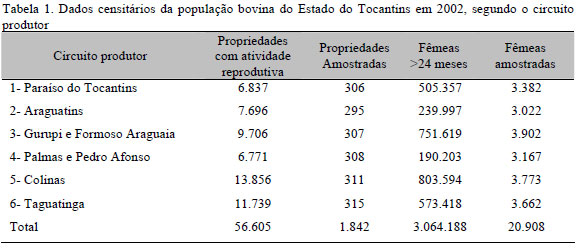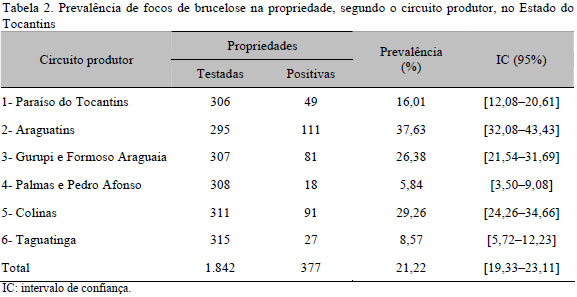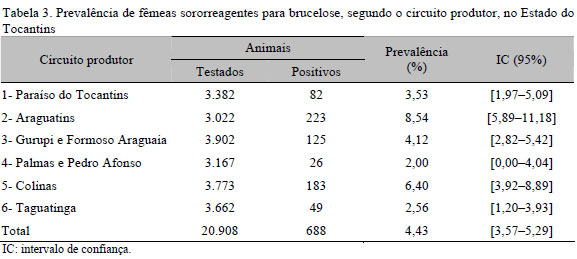A study was carried out to characterize the epidemiological situation of brucellosis in the State of Tocantins from February 2002 to August 2003. The State was divided into six regions with a homogeneous productive system. For each region, a simple random sample was calculated to estimate the prevalence both in farms and cows older than two-year. To achieve this, from 10 to 15 adult cows (older than two-year) were sampled. A total of 20,908 sera from 1,842 farms were obtained. For the whole State of Tocantins, the prevalence of positive farms (or farms with at least one positive animal) was 21.2% [19.3-23.1%]. When the production regions were considered, the prevalences for the regions 1, 2, 3, and 5 were: 16.0% [12.1-20.6%], 37.6% [32.1-43.4%], 26.4% [21.5-31.7%], and 29.3% [24.3-34.7%], respectively. In the regions 4 and 6, the prevalences were 5.8% [3.5-9.1%] and 8.6% [5.7-12.2%], respectively. In each visited farm, a questionnaire was applied, in order to evaluate the association between with possible risk factors and the brucellosis. The risk factors (odds ratio, OR) associated with the infected herds were number of cows above 120 (OR= 2.0) and slaughtering of breeding animals in the farm (OR= 1.52). Vaccinating against brucellosis (OR= 0.37), presence of birth pen (OR= 0.72), and dairy farm (OR= 0.63) presented as protective factors.
cattle; brucellosis; prevalence; risk factors; Tocantins; Brazil

 Epidemiological situation of bovine brucellosis in the State of Tocantins, Brazil
Epidemiological situation of bovine brucellosis in the State of Tocantins, Brazil







